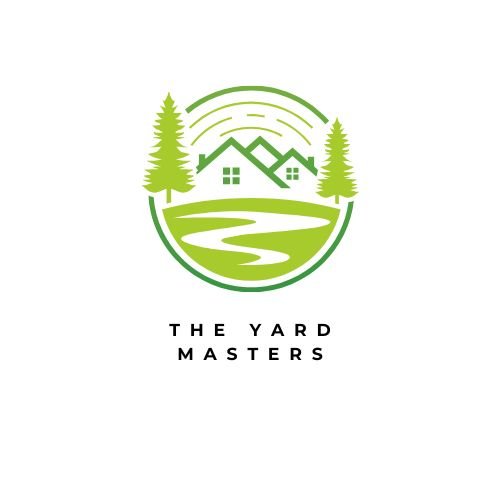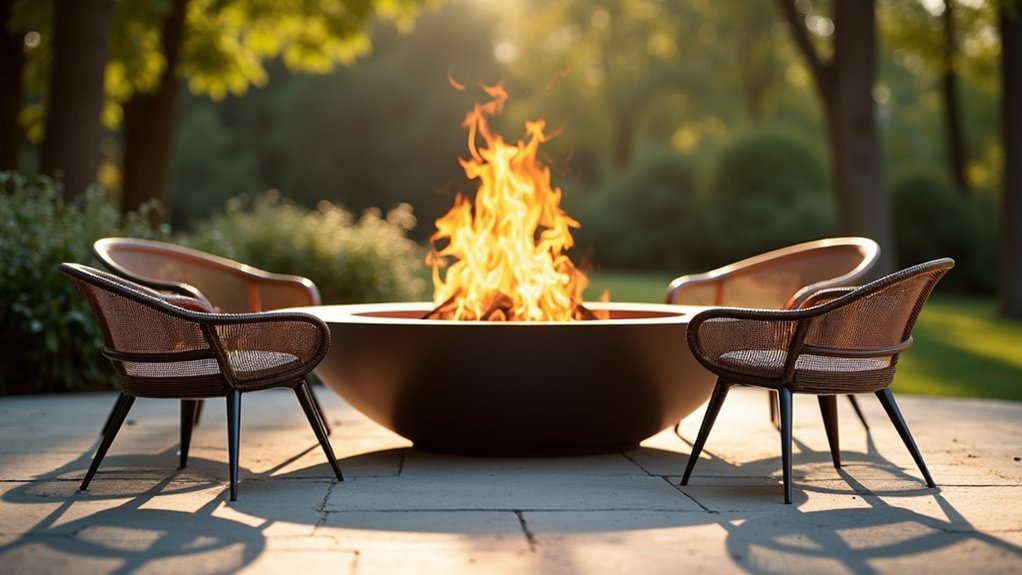You’ll want stainless steel spark guards for maximum durability and high-temperature resistance, especially for 20-40 inch fire pits. Look for fine gauge mesh that effectively traps embers while maintaining proper airflow and ventilation. Premium options like powder-coated steel offer excellent rust protection, while copper screens provide natural corrosion resistance with attractive aesthetics. Two-piece designs let you add fuel without removing the entire screen. Proper sizing and regular maintenance guarantee these safety investments protect your outdoor space for years ahead.
Materials and Construction Features That Matter Most

When selecting a spark guard for your outdoor heating setup, the material and construction quality directly determine both safety performance and longevity.
Stainless steel stands out as the top choice, offering exceptional durability and high-temperature resistance that guarantees your spark screen performs reliably through countless heating sessions.
Steel mesh construction provides the perfect balance between spark containment and airflow. The gauge of your steel mesh matters markedly – it must be fine enough to trap dangerous embers while allowing proper ventilation for efficient combustion.
Powder-coated steel options add vital protection against rust and corrosion, extending your guard’s lifespan in harsh weather conditions.
For those prioritizing aesthetics, copper spark screens offer natural corrosion resistance with distinctive visual appeal, though they’ll require a higher investment.
Top-Rated Spark Guards for Different Fire Pit Sizes
Finding the right spark guard for your fire pit depends heavily on getting the proper size match, as even the highest-quality materials won’t protect you if the screen doesn’t fit correctly.
For fire pits measuring 20-40 inches in diameter, stainless steel screens offer exceptional durability and high-temperature resistance. These screens effectively block sparks and embers while withstanding intense heat.
If your fire pit has unique dimensions, custom-sized options guarantee a snug fit that maximizes protection.
Consider these key features when selecting your spark guard:
- Two-piece designs that allow easy fuel addition without removing the entire screen
- Premium construction that justifies the $99-$389 price range
- Materials requiring minimal maintenance with proper cleaning and rust inspections
Quality screens last several years, making them worthwhile investments for safe outdoor heating.
Installation and Compatibility Requirements

Proper installation begins with accurate measurements, as spark guards must fit snugly on your fire pit to provide effective protection.
You’ll need to measure your fire pit’s diameter carefully, as most spark arrestor designs accommodate specific sizes ranging from 20 to 40 inches. Installation typically requires no tools—simply place the screen securely over your fire pit opening.
For peak compatibility, always verify manufacturer specifications match your outdoor heating setup.
Some guards feature two-piece designs that let you add fuel without removing the entire screen, improving convenience during use.
Versatile options like the TOYANDONA Stove Spark Mesh Chimney Guard work with various appliances, including stoves and chimneys.
Checking compatibility guarantees your spark arrestor delivers maximum performance and safety.
Maintenance Tips to Extend Guard Lifespan
Since spark guards endure constant exposure to heat, smoke, and outdoor elements, consistent maintenance becomes vital for maximizing their protective lifespan.
Regular cleaning prevents debris buildup that compromises performance and safety.
Your spark guard maintenance routine should include:
- Weekly cleaning with warm soapy water and non-abrasive sponges to remove soot and ash accumulation
- Monthly inspections for rust spots, cracks, or bent areas that could affect structural integrity
- Seasonal treatments using vinegar on minor rust followed by protective coatings for enhanced durability
Store your spark guard in dry, sheltered areas when not in use to prevent weather damage and pest intrusion.
Don’t ignore significant rust or structural issues—proactive replacement guarantees continued safety during outdoor heating sessions and protects your investment long-term.
Safety Performance Ratings and Real-World Testing

While proper maintenance keeps your spark guard functioning effectively, understanding how these protective barriers perform under real conditions helps you make informed purchasing decisions. Safety performance ratings evaluate how well guards block escaping embers during actual use, greatly reducing fire hazards in outdoor settings.
| Testing Factor | Premium Guards | Standard Guards |
|---|---|---|
| High Temperature Resistance | Withstand intense heat without warping | May degrade under extreme conditions |
| Ember Containment | Fine mesh provides superior blocking | Larger mesh allows some escape |
| Weather Durability | Last several years with maintenance | Shorter lifespan in harsh conditions |
Stainless steel and powder-coated options consistently receive top ratings for high temperatures resistance. Consumer reviews highlight real-world reliability, with finer mesh designs delivering better ember containment while maintaining proper airflow for safe outdoor heating.
Frequently Asked Questions
What to Put Under a Fire Pit on a Deck?
You should place a heat-resistant fire pit mat or stone paver base under your fire pit. Consider adding concrete tiles or non-combustible materials for extra protection against heat damage.
Do You Need a Spark Screen for a Fire Pit?
Yes, you need a spark screen for your fire pit. It’s essential for preventing embers from escaping and starting accidental fires. You’ll protect surrounding areas and enhance safety while enjoying your outdoor fire experience.
How to Make Sure a Fire Pit Is Safe?
You’ll guarantee fire pit safety by placing it 20-25 feet from structures, using a spark screen, choosing non-combustible surfaces, burning hardwoods, and keeping water nearby while continuously monitoring.
What Should I Put on the Bottom of My Fire Pit?
You should put non-combustible materials like gravel, sand, or pavers on your fire pit’s bottom. Add lava rocks or fire glass for better drainage and use a heat-resistant mat underneath for protection.





Leave a Reply